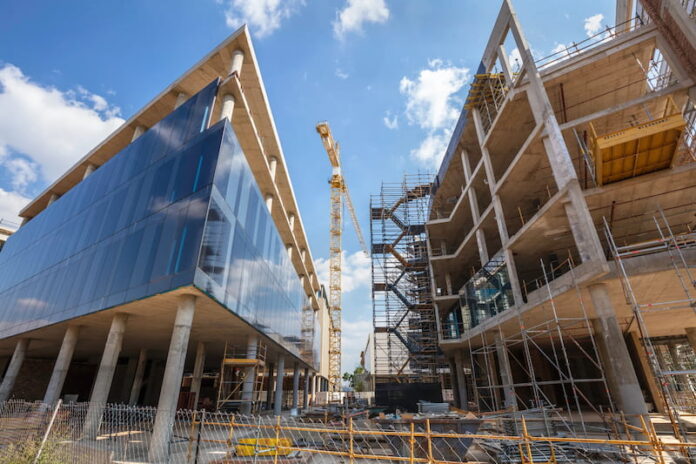Healthcare is continually evolving, and facilities often require renovation, expansion, or even complete reconstruction. Healthcare construction planning is a critical process that ensures these facilities meet the ever-growing demands of modern healthcare plus it ensures that the projects are up to the required standards. In this guide, we will delve into what you should know about healthcare construction planning, from the initial stages of design to the final construction and occupancy.
Assessment of Your Healthcare Needs
Assessing your healthcare needs involves evaluating your current facility’s shortcomings and identifying areas where improvements or expansions are necessary. Needs assessment helps you to understand the specific requirements of your healthcare infrastructure. This ensures that your facility can effectively support patient care, treatment, and medical equipment.
Neglecting this assessment can lead to inefficiencies, compromised care quality, and increased construction and operational costs. Consider factors such as patient volume, medical technology advancements, regulatory compliance, and population growth trends.
Tip: Engage with key stakeholders, including clinicians, administrators, and facility managers, to gain a holistic understanding of these requirements.
Design Meticulously
Design phase in healthcare construction planning is a critical and highly specialized task. It lays the foundation for the entire project, influencing its functionality, efficiency, and cost-effectiveness.
Here, you will need to engage with the right professionals like architects, engineers, and healthcare design experts to create a functional and aesthetically pleasing space. Meticulous design is crucial to give you spaces that support patient care, infection control, and staff workflow.
During this phase, ensure healthcare-specific considerations are addressed. These include integration of cutting-edge medical technologies, future expansions, patient comfort, safety, and privacy. A well-planned design phase not only ensures a state-of-the-art healthcare facility but also minimizes costly changes during construction and promotes the best possible patient outcomes.
Proper Budgeting and Financing
Developing a realistic budget and securing financing are crucial steps in your healthcare construction planning. Construction costs in the healthcare sector can be substantial due to the specialized nature of healthcare facilities and the need for advanced technology and equipment. Therefore, you ought to be thorough in your budget and financing analysis.
Work with construction experts to create detailed cost estimates that account for your construction materials, labor, equipment, and contingencies. Also explore your financing options, which may include loans, grants, or public-private partnerships, to ensure you have the necessary funds to complete the project. Finally, implement cost control measures throughout the construction process to prevent budget overruns.
Construction Management
Effective construction management is vital to ensure your project stays on schedule and within budget. Effective construction management involves meticulous planning, risk assessment, and adherence to regulatory standards specific to healthcare facilities. Collaborate with experienced construction professionals who understand the complexities of healthcare construction.
Work with architects, engineers, project managers, and contractors with a proven track record in healthcare projects. You should check this site for more information on construction expertise and materials. Remember, their expertise and attention to detail is crucial for a successful healthcare construction planning and execution. This ensures that your facility is built to meet the highest standards of patient care and safety.
Regulatory Compliance
One of the most critical aspects of any healthcare construction planning is navigating the complex web of regulatory requirements. Healthcare facilities must comply with numerous federal, state, and local regulations, including building codes, healthcare licensing, and safety standards.
Engage with regulatory experts or consultants who can help you understand and navigate these requirements. Incorporate necessary features like accessibility, fire safety, and infection control measures into the design. Prioritizing regulatory compliance not only safeguards patients but also ensures the longevity and credibility of your healthcare institution.
Occupancy and Transition
The final stage of your healthcare construction planning is the occupancy and transition phase. This involves preparing your facility for full operation, including staff training, equipment installation, and patient transfers. Provide comprehensive training to your healthcare staff to familiarize them with the new facility and any new technology systems.
Ensure that all your healthcare equipment and systems are tested and commissioned before patient care begins. Plan for the safe and efficient transfer of patients from your old facility to the new one, minimizing disruption to patient care
Wrapping up
Healthcare construction planning and execution is a multifaceted process that requires careful consideration of various factors. A well-executed construction plan can result in a state-of-the-art healthcare facility that meets the needs of patients and healthcare providers while adhering to the highest standards of safety and quality. Follow the steps we’ve outlined in this guide to help you through the process of healthcare construction planning and execution. This will help you avoid costly construction mistakes that might come to haunt your project later.
Read Also
- How to Drive Growth Through Customer Centricity in HealthcareThe world of healthcare is changing in big ways. Consumers are now stepping up and taking charge of their health journeys. This change is happening now for important reasons. The U.S. health and wellness market is huge, projected to be over $6 trillion in 2025. This growth is fueled by rising out-of-pocket costs and more… Read more: How to Drive Growth Through Customer Centricity in Healthcare
- Why Biotech Companies Choose Contract Manufacturing Organizations for Scalable GrowthBiotech and pharmaceutical companies are under constant pressure to innovate, scale fast, and stay compliant. Doing everything in-house can slow them down. That’s why many are turning to a contract manufacturing organization to handle specialized production needs—especially in genetic and molecular biology fields. Reliable CMOs offer speed, precision, and regulatory knowledge. For early-stage firms, this… Read more: Why Biotech Companies Choose Contract Manufacturing Organizations for Scalable Growth
- Maximizing Digital Reach for Podiatry Clinics in Local HealthcareMaximizing Digital Reach for Podiatry Clinics in Local Healthcare As the healthcare industry evolves, mobile marketing becomes indispensable for practitioners. Podiatry clinics, focusing on foot and ankle care, must adapt to digital strategies to engage patients effectively. Implementing tailored SEO practices is crucial for these clinics to thrive in an increasingly competitive market. Digital marketing… Read more: Maximizing Digital Reach for Podiatry Clinics in Local Healthcare
- How to Start a Mental Health Conversation with Your ManagerTalking about mental health at work can feel awkward, intimidating, or even risky. But if you’re struggling, keeping it bottled up isn’t going to make things better. Having an open and honest conversation with your manager can be a game-changer, whether you need accommodations, support, or just someone to understand what you’re going through. This… Read more: How to Start a Mental Health Conversation with Your Manager
- How Efficient Business Contracts Can Boost GrowthIn the business world, efficiency isn’t just a buzzword—it’s a necessity for survival and growth. Every facet of a company can contribute to greater efficiency, but some often-overlooked areas hold substantial potential. Business contracts, particularly those loaded with bureaucratic jargon, can slow down operations. Streamlining these can free up resources and time, allowing for greater… Read more: How Efficient Business Contracts Can Boost Growth






